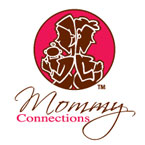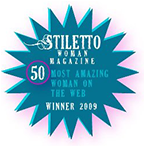Top parenting stories this week
Healthy Grocery Shopping Strategies for Families
Just when you thought you were making healthy food choices for your family, it turns out there’s a lot more to food labels than meets the eye. Here’s how to decode nutrition claims on your next trip to the grocery store.
by: Kerry McLeod
In This Article
Healthy Shopping Strategies
- The front label on foods is a manufacturer's prime real estate where they entice shoppers to buy their products–much of the wording (especially things like "fortified" and "sugar-free") is pure advertising jargon.
- Labels with "zero trans fat" imply a product contains no trans fats, but labeling loopholes allow foods that contain less than 0.5 g of trans fat per serving to say they contain none at all.
- When comparing foods, the ingredient list is a good place to start. Manufacturers list ingredients in order from most to least–so if the first ingredient listed is sugar, you know you're off to a bad start.
- "Light" or "reduced calorie" juices are usually watered down, contain less juice, and have artificial sweeteners and chemical additives. It's better to give your kids 100% fruit juice and add a few ounces of water to reduce calories and sugar.
- Labels that read "made with wheat, rye, or multi-grains" don't actually tell you how much whole grain is really in the product. Look for the word "whole" before the grain to ensure you're getting a 100% whole-grain.
W
hen you're trying to shop for healthy foods for your family, it's easy to fall for products emblazoned with marketing buzzwords such as "fortified" and "sugar-free." But many foods that appear to be good for you are actually the opposite. Here's how to decode product labels to help you select the healthiest foods on store shelves.
Words to watch out for
-
Fortified, enriched, added, extra, plus – usually mean the food has been altered or processed in some way.
-
Zero trans fat – implies that a product has no trans fats, but labeling loopholes allow foods that contain less than 0.5 g per serving to declare they contain none at all. (Code words for trans fats also include hydrogenated or partially hydrogenated oils.) Meanwhile, "low fat" means a product contains 3 g or less while "low in saturated fat" means it contains 2 g or less of saturated and trans fat combined.
-
Light, or reduced calorie – "light" refers to foods that are either reduced in fat or reduced in calories. If a product is labeled "reduced in calories," it means it contains at least 25% fewer calories than the food to which it is compared.
When it comes to "light" or "reduced calorie" juices, they're usually watered down, contain far less juice, and have artificial sweeteners and chemical additives. Your best bet is to buy your kids 100% fruit juice and simply cut the serving in half or add a few ounces of water to reduce calories and sugar.
-
Sugar-free, sugarless, or no added sugar – tell you nothing about sugar derivatives or sugar substitutes, which can yield just as many calories as table sugar and may be more harmful for you than sugar itself. Check the ingredient list for sugar substitutes, such as aspartame, neotame, erythritol, acesulfame-potassium, sorbitol and lactitol.
-
Made with wheat, rye, or multi-grains – implies the food is a good source of whole grains, but doesn't actually tell you how much whole grain is really in it. Look for the word "whole" before the grain to ensure you're actually getting a 100% whole-grain product. (To be a source of fibre, a product must contain at least 2 grams of fibre.)
-
Natural, or made from "natural" ingredients – simply means the manufacturer started with a natural source. Once processed, the food may not resemble anything "natural."
- Organically grown, organic, pesticide-free and no artificial ingredients – say very little about the nutritional value or safety of the product. Trust only those labels that say "certified organically grown."






